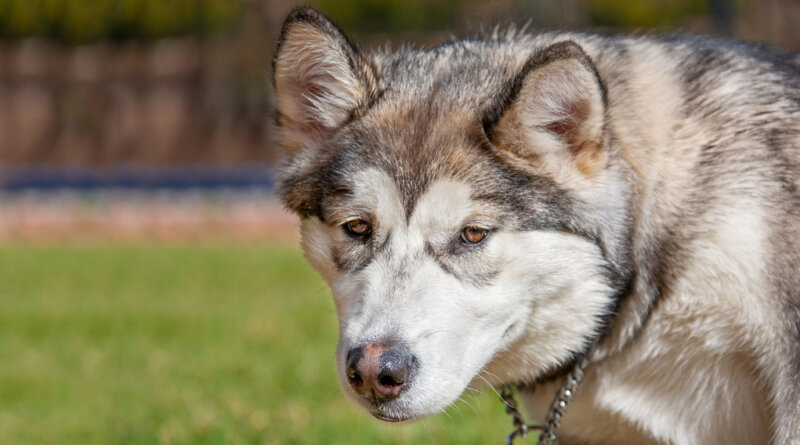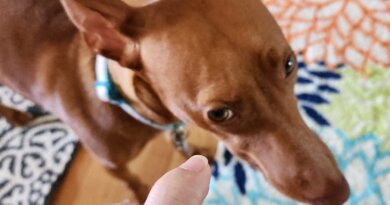Euthanasia, Causes, and Symptoms – Top Dog Tips
Has your dog been acting forgetful, anxious, and irritable lately? Is the loss of appetite and decline in weight causing your pet to become lethargic?
Have you been searching for potential clues to find out what’s wrong but have no idea where to start?
Dog dementia is a health concern every pet owner should watch out for.
Also known as Canine Cognitive Dysfunction, it is a cognitive disorder that affects learning, comprehension ability, and basic motor functions.
Dog dementia affects about 68 percent of dogs above age 15!
While there might be other reasons for your pooch’s weird behavior, dog dementia should be on the back of your mind as an early diagnosis is necessary for effective treatment.
In this article, we’ll cover some of the most frequently asked questions regarding dog dementia and euthanasia among other treatments.
Ranging from its symptoms, causes, and diagnosis, we’ll delve into when euthanasia may be the only humane way to alleviate your dog’s suffering.
What Are the Symptoms of Dog Dementia?
Suspect your dog is suffering from dementia? Need a concise checklist of symptoms to look out for?
While dementia in dogs may be mild and harder to detect in the early stages, there are common signs among all dogs. These include:
1. Confusion and Disorientation
Your dog may lack a sense of direction, even in familiar places. Your beloved pet may be unable to remember rooms, people, and even other pets.
Your pooch may also start neglecting house rules or training. Peeing on the carpet and scratching the furniture become more common.
Your pet will pace around the room or stare blankly at the walls, trying to remember basic things.
2. Poor Memory
Dog dementia is often regarded as the Alzheimer’s of dogs, and rightfully so.
The dog may undergo brief or prolonged intervals of memory loss as they try to navigate around the home.
Apart from defecation on the bed and carpet (no longer remembering training), your pet may stare blankly at you and no longer respond to their name when called.
They are not being disobedient. They have just started to forget everything slowly but surely.
3. Anxiety and Fear
Picture this: you’re carrying out your daily chores when all your memories disappear.
You no longer know which room you’re in, the people in it, and why you’re even there. It’s likely to cause you to panic, right?
This is what happens to dogs with dementia. They may get afraid, anxious, and fearful of their surroundings.
Their inability to remember prior knowledge and store new information will be miserable for them.
4. Changes in Sleeping Schedule
All this inevitably causes a change in the sleep schedule. Your dog may sleep throughout the day and consequently stay awake throughout the night.
But that is not all. Night pacing (walking restlessly around the house) and night vocalization (excessive barking) are also prominent signs of dog dementia, especially among senior dogs.
5. Changes in Behavior
Physical illnesses cause behavioral changes in dogs and humans alike.
Dogs with dementia may undergo a loss in appetite, causing them to lose weight. They may even incline towards anorexic tendencies.
The lack of fulfillment of bodily needs will make them irritable and physically inactive.
They may refuse to play the games they love or become too exhausted to engage in their daily grooming.
The impact of dementia on your pooch will vary depending on their age and dog breed. Larger breeds tend to age faster than smaller breeds.
Due to this factor, the symptoms may be more prominent in a German Shepherd than in a Yorkshire Terrier.
You must watch the following YouTube video to learn what Dog Dementia looks like:
What Are the Causes of Dementia in Dogs?
Dementia in dogs is traceable to several biological and social factors.
While studies have been unable to find a conclusive answer so far, age is considered the most obvious and common factor.
Much like humans, aging affects dogs in different ways. One of them includes influencing the brain’s chemical changes, increasing the likelihood of dementia.
In technical terms, a dog’s aging decreases the levels of neurons that control the cerebral cortex and cerebellum.
That inevitably impacts the dog’s learning, memory, and motor functions resulting in dementia or CCD.
Research also indicates abnormal levels of beta-amyloid in the brain as another potential cause. Since protein buildup reduces nerve signaling, it alters healthy doggo behavior.
Dogs with CCD (Canine Cognitive Dysfunction) have neurotransmitters that contain high levels of monoamine oxidase B.
This compound is associated with the breakdown of several chemicals in the brain, including dopamine which controls happiness, pleasure, and motivation.
There’s not much you can do about dog dementia except give your pet a nutritional diet.
This will mainly target your pet’s overall health and well-being. No data regards this as a strictly preventative measure.
Social factors associated with dementia include an inactive and antisocial lifestyle. We recommend going on daily walks and regular playtime for optimum health.
How is Dog Dementia Diagnosed?
So now you’ve gone through the checklist and ticked off the symptoms.
While understanding the symptoms may help comprehend your dog’s behavior, it is not a substitute for an objective examination and verification carried out through standard testing by a veterinary professional.
Diagnosis for dog dementia by a professional may go like this:
- History-taking to ascertain overall well-being and susceptibility to the disease.
- A thorough physical checkup.
- Diagnostic tests, including blood tests, ultrasounds, and X-rays.
If your dog is diagnosed with dementia, the vet will inform you of the various ways of managing the illness, depending on how critical it is.
While mild forms of dementia may be easier to handle for the dog (and owner), the vet may recommend animal euthanasia as a last resort for dogs who are unlikely to recover.
What Is Animal Euthanasia?
Animal Euthanasia is a medical procedure that humanely ends the animal’s life through injectable drugs to alleviate its suffering.
Although it is carried out for multiple reasons, the most common reasons are diseases deemed irrecoverable by the vet.
Since the intensity of some illnesses—such as dog dementia—may be painful for the dog, euthanasia may be the best way to help your dog.
It is also worth mentioning that animal euthanasia may be very emotional for the pet owner, who may not be willing to put their pet down.
Willingly and voluntarily accepting this form of treatment can be immensely hard for someone who has spent a lifetime caring for and spending time with their pet.
It is the vet’s responsibility to suggest alternative cures or treatments before resorting to euthanasia.
If there are no critical health implications, euthanasia goes against animal welfare and may be punishable by law, depending on the state.
There are variable regulations for when the owner desires to undergo this procedure while the dog is still relatively fit. Or if the owner is against it despite the dog’s condition suggesting otherwise.
The vet will make charitable assistance or a referral if the reason for not opting for euthanasia is a lack of funds.
Should You Euthanize a Dog With Dementia?
There is no strictly objective answer to this. It all depends on factors such as:
- The nature of the disease
- How critical it is
- Alternative forms of treatment
- The success rate of alternative forms of treatment
- Your pet’s age (which is a major determinant of future health in these situations)
- The dog’s overall well-being
- Your ability to provide for the dog financially
To answer the question, yes, you should euthanize your dog with dementia if there is not any hope for recovery.
As painful as it may be to hear, this may be the only way to alleviate your dog’s pain.
How To Decide If It’s Time To Euthanize Your Dog?
Putting a pet down can be incredibly distressing for the owner.
Considering how most pet owners regard their dogs as their family members, the prospect of death can cause much pain and grief -both before and after the procedure.
But prolonging this unavoidable decision will only enhance your and, most importantly, your pet’s suffering.
It may be time to say goodbye if your dog is exhibiting the following signs:
- If medication fails to ease their pain
- Constant vomiting and diarrhea
- Consistent and fast weight loss (dementia causes a loss of appetite)
- If your pet refuses to eat and will only do so if forced
- Frequent involuntary defecation
- If your pet has lost all interest in the activities they used to enjoy (such as going for walks and playing with toys)
- If your dog has become too weak to stand on its own
- If your beloved pet can no longer breathe normally
These are general signs of ill health that may or may not be due to dementia. Make sure to visit your vet and get a proper diagnosis.
You must also discuss euthanasia with your vet to get a better understanding of your dog’s health.
Is Euthanasia Painful to Dogs?
Euthanasia is regarded as a painless procedure to end a dog’s life for medical reasons. The animal loses consciousness within seconds.
This means they do not feel anything as their heart and lungs stop functioning.
As quoted in this research, “It is our responsibility as veterinarians and human beings that if an animal’s life is to be taken, it is done with the highest degree of respect, and with an emphasis on making the death as painless and distress free as possible.”
It is also worth mentioning that some dogs may give off a small cry when injected with medication.
This occurs in the brief interval before the drug takes effect and the dizziness kicks in.
How To Prepare Yourself for a Planned Euthanasia?
Mentally preparing yourself before putting your pet to rest is one of the most daunting tasks one will ever face.
We recommend asking your vet questions to ensure it is the most humane and loving way to end your dog’s suffering.
You may also consult another professional for a second opinion if you are dissatisfied with the diagnosis and treatment.
But denial will make it more difficult for you and your dog. If your pet fits the checklist discussed above, it might be better to work towards the solution, regardless of how difficult it may be.
Ask your questions veterinarian regarding the procedure. Understanding what will happen will lessen some of the anxiety you may be experiencing.
You can also plan the day to avoid chaos. This includes the venue of the procedure (whether it is at the hospital or your home), and who will stay in the room during the procedure.
Seeking social support from family, friends, and other loved ones is also helpful.
Talking it out may provide the catharsis you have been searching for. Plus, it will also make you feel less alone, which can lessen the pain at times like these.
Dog Dementia and Euthanasia: Final Thoughts
One cannot reverse the signs of aging. Similarly, one cannot reduce the chances of dog dementia completely.
While nutrition and good genetics help reduce its severity, the disease is common in dogs over the age of 15.
Death is inevitable either way. It is very emotionally turbulent to make this decision for your dog.
No one wants to part from their best friend that has been an incredible source of joy throughout their life.
But this is the only way to release your dog’s pain sometimes. An induced death by a professional will alleviate the agony your pet has been feeling all this time.
Life may not be the same after it, but it will go on. Your memories of your pet will outlast their life, and you can even hold a memorial for closure.
Rest in peace, dear best friends. The comfort and happiness you brought us will never be forgotten.
READ NEXT: Dog Dementia Support Groups








